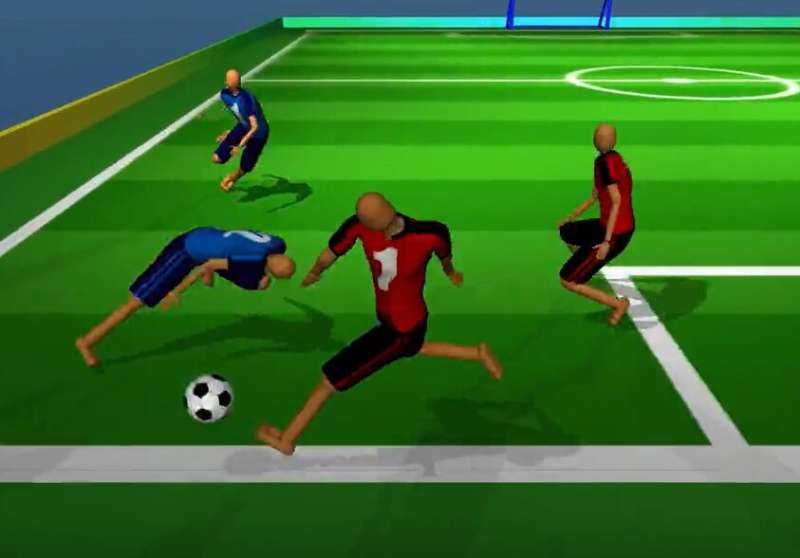Machine learning football simulator. Credit: Science Robotics (2022). DOI: 10.1126/scirobotics.abo0235
A team of researchers at Google's Deep Mind London project, has taught animated players how to play a realistic version of soccer on a computer screen. In their paper published in the journal Science Robotics, the group describes teaching the animated players to play as solo players and also in teams.
For several years, robot engineers have been working diligently to create robots capable of playing soccer. Such work has resulted in competition between various groups to see who can devise the best robot players. And that has led to the creation of RoboCup, which has several leagues, both in the real world and simulated. In this new effort, the researchers applied a new degree of artificial intelligence programming and learning networks to teach simulated robots how to play soccer without ever giving them the rules.
The idea behind the new approach is to get simulated soccer players to learn to play the game the same way humans do—by watching how others do it. It also involved starting from pretty much ground zero. The simulated players first had to learn how to walk, then to run and kick a ball around. At each new level, the AI systems were shown video of real-world soccer players, which allowed them to learn not just the basics of soccer playing, but to mimic the way professional athletes move as they engage in high level sporting events.
Video demonstrating the machine learning study. Credit: Liu et al., Sci. Robot. 7, eabo0235
Once the robots learned to play the game from a solo player perspective, they were first pitted against a single player. As their skills improved, more players were added. Eventually, the researchers had small teams playing against one another, such as two-on-two. And as the AI players learned more about how the game works, more players were added until there was a full complement.
The results achieved by the researchers are impressive—the action looks like a computer game but is more realistic because the players are making decisions on their own. But, as the researchers acknowledge, it is also simplified. No fouls are called, for example, and there is an invisible boundary around the pitch, preventing balls from straying out of bounds. Also, they note that thus far, there have been long learning times involved in teaching the players to play, which could inhibit the technology from advancing to real-world robots.
More information: Siqi Liu et al, From motor control to team play in simulated humanoid football, Science Robotics (2022). DOI: 10.1126/scirobotics.abo0235
Deep Mind's blog: www.deepmind.com/blog/from-mot … mbodied-intelligence
Journal information: Science Robotics
© 2022 Science X Network
























